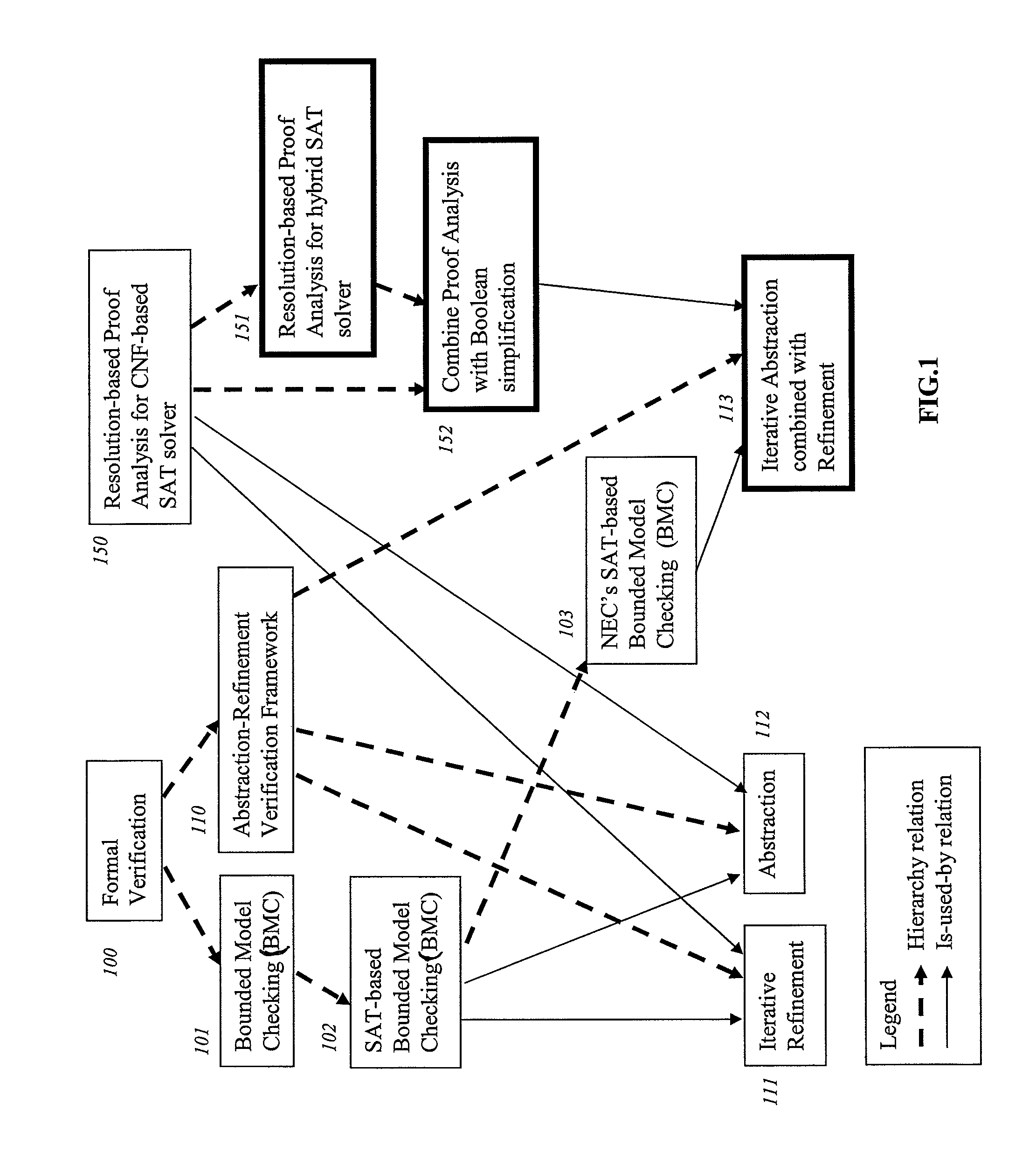Iterative abstraction using SAT-based BMC with proof analysis
a proof analysis and abstract model technology, applied in the field of resolution-based proof analysis techniques, can solve the problems of unbounded verification methods failing to complete, monotonically larger size of refined abstract models, etc., and achieve the effect of safety
- Summary
- Abstract
- Description
- Claims
- Application Information
AI Technical Summary
Benefits of technology
Problems solved by technology
Method used
Image
Examples
Embodiment Construction
[0067]A. Synopsis
[0068]We have employed SAT proof analysis techniques effectively, to obtain abstract models in a top-down iterative abstraction framework based on use of BMC in the inner loop. In our approach, a lack of a counterexample provides an opportunity to perform further abstraction. On the other hand, the presence of a counterexample does not necessarily require a refinement based on that particular counterexample.
[0069]In comparison to bottom-up approaches, our top-down approach may need to handle much larger models. However, note that we do not require complete verification on these models for the purpose of abstraction. Instead, our abstraction method is based on SAT-based BMC, which we use up to some finite depth to check for counterexamples anyway. Furthermore, in practice, the first iteration of our iterative abstraction framework provides a significant reduction in model sizes, such that all successive iterations need to work on smaller models. One of the broader go...
PUM
 Login to View More
Login to View More Abstract
Description
Claims
Application Information
 Login to View More
Login to View More - R&D
- Intellectual Property
- Life Sciences
- Materials
- Tech Scout
- Unparalleled Data Quality
- Higher Quality Content
- 60% Fewer Hallucinations
Browse by: Latest US Patents, China's latest patents, Technical Efficacy Thesaurus, Application Domain, Technology Topic, Popular Technical Reports.
© 2025 PatSnap. All rights reserved.Legal|Privacy policy|Modern Slavery Act Transparency Statement|Sitemap|About US| Contact US: help@patsnap.com



